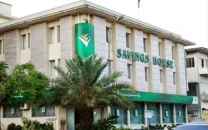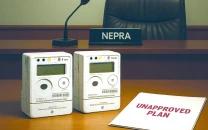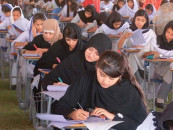The return of hope
Lee Kuan Yew and Park Chung-hee transformed the countries they inherited — Singapore and South Korea

The writer is a freelance contributor based in New Jersey. He works in the technology sector
Now think of Pakistan: on the one hand, a commando country with impressive military battalions, nuclear warheads and a military that guzzles 22 per cent of the country’s budget in giant gulps, while on the other hand, limping on a broken, brittle and a quivering civil society. An image not much different from our hypothetical half-gladiator-half-addict friend.
But we know for anything to function, the ‘whole’ and not just ‘specific parts’ must be attended to. And so this image must change, and we know it can, if such change is willed by those in a position of enacting it. As has been accomplished by others before us.
Singapore, once a jungle island, is today a metropolitan dreamscape — a terrestrial heaven if there is one. Gaze further east, where flows the miracle of the Han River. Five decades ago, South Korea’s GDP per capita was lower than that of Sub-Saharan African countries, hovering just below $80. Now that figure is a five-digit mammoth — nearly $25,000. Today, Seoul rivals Silicon Valley. Taiwan is a similar story. What these states had in common were strong, committed leaders. Call them benevolent dictators if you will, but Lee Kuan Yew and Park Chung-hee — investing in education, industry and trade — transformed the countries they inherited into economic success stories. In Taiwan, the KMT maintained one-party rule, but land reform and the development of manufacturing catapulted its economy. Short on natural resources, these countries realised in their infancy that export-based economies, following the value-added model, was the way to go.
Pakistan, too, has had dictators aplenty, but alas none was benevolent. So unlike the Asian Tigers, it has had few miracles to speak of, other than the alleged metaphysical ones that only interest the clergy. Today the country lays broken in different places. Yet there is scope for repair, if only there is will to do so.
Take the power sector that’s been dysfunctional for years, forcing businesses to move to pastures greener or to cease altogether. Applauding the CPEC and power plants is all good, but generation is not the main problem, distribution is. The distribution and transmissions losses eat away a quarter of all energy produced. Add to this the circular debt, an entirely man-made problem, and things are made unnecessarily worse. The solution stares the Nawaz government in the face — privatise DISCOs and GENCOs — but the prime minister just stares back… and keeps staring.
Then there is trade. By some estimates, Pakistan and India can potentially raise their trade volume up to $40 billion — a massive increase from the single-digit dwarf that it is today. Yet Pakistan has failed to grant India MFN status for reasons known only to the intellectual polymaths in government. And besides, direct imports from India will save Pakistan enormous losses in indirect routes that bear higher transport costs. Add to this Pakistan’s export diversification which remains narrow as always — stuck to textile as we are since the beginning of time — while export destinations are similarly few. And even with textile, consider the lost opportunity: Pakistan is the largest producer of cotton, yet trails behind Bangladesh in its export — far easier as it is to churn yarn than value-added designer brands in a place where power blackouts are routine and business sense is all but myopic.
Foreign aid is another malaise all too, well known to the Pakistani collective. IMF tranches, Kerry-Lugar capital injections, Saudi largesse — these are all the building blocks of bondage. Solution to this serfdom? Self-sufficiency in indigenous resources, such as wind, coal, solar, biomass and hydropower. And, of course, skinning the elephant in the room: ensuring tax compliance, starting from the scavengers at the top. If Nawaz fails on this front, he is a failed prime minister, nothing more, nothing less.
But it will be in education — of a youth bulge that remains criminally untapped — where Pakistan’s ascent from dysfunction to viability will need to emerge from. This is the lesson we are learning from the Asian tigers, from India, China, Israel and all other places that defied odds much like our own to sprint ahead of the others. Beyond education and R&D, conduits are needed to attach knowledge to commercial ends. And that requires innovation and free enterprise. Free enterprise, in turn, is born in a certain eco-system: government funds; early stage investors (angels, incubators and micro-VCs) and late stage investors (growth stage VCs and banks); support systems of lawyers, accountants, conferences, co-working spaces; looser tax legislation for businesses and so on.
Out-of-the-box measures are needed to make this happen: Think Israel's 'Talpiot' programme, designed to attract the brightest amongst Israel’s diaspora back to the country. A huge success, this programme led to Intel’s entry into Israel, a boom in its semi-conductor industry, and the consequent take-off of its tech economy. Or take Israel’s BIRD foundation: a business match-making service to channel big market deals from the West towards local tech entrepreneurs — another huge success which resulted in several BIRD companies registering in the New York Stock Exchange. And let’s not forget the early 1990s when India’s economy was in dire straits. Radical economic reforms were introduced: monopolies were slashed; trade tariffs and interest rates were reduced; markets were deregulated, and so on. Today, according to NASSCOM, India is the fourth-largest start-up hub in the world, with more than 3,000 new companies, which are expected to multiply manifold over the next five years — the ‘gold rush’. Digital India is also making waves, designed to raise all boats with one giant digital tide — key provisions include e-governance, digital literacy and broadband highways. In China, incubators are funded both by private and public sectors that help fresh graduates develop new products. The government then pushes local state-owned enterprises to buy these products and provide some rebates as well.
There are lessons in this for Pakistan. Take mobile broadband. Today, Pakistan has 140 million mobile subscribers — that’s a huge 90 per cent mobile phone penetration. Of these, only 15 million use mobile internet. What better time for Pakistan to connect its unconnected — through a combination of affordability, usability and awareness initiatives? This is one opportunity Pakistan should not want to miss. Ranked 128 out of 189 countries on World Bank’s ease of doing business index, the Nawaz government owes its population nothing less, for in this lies this government’s redemption for past sins and a huge potential for future success.
And it may all well happen because things are, indeed, improving. As of this writing, the Nawaz government has wisely desisted picking any sides on the Saudi-Iran conflict. Terrorism is down, notwithstanding the recent tragedy in Charsadda. There have been attempts made to crack down on Jaish-e-Mohammad. The media is freer than before. There are orders to unblock YouTube. Above all, there is the return of something which had quietly departed from Pakistan a little while back — hope.
Published in The Express Tribune, January 23rd, 2016.
Like Opinion & Editorial on Facebook, follow @ETOpEd on Twitter to receive all updates on all our daily pieces.














COMMENTS
Comments are moderated and generally will be posted if they are on-topic and not abusive.
For more information, please see our Comments FAQ